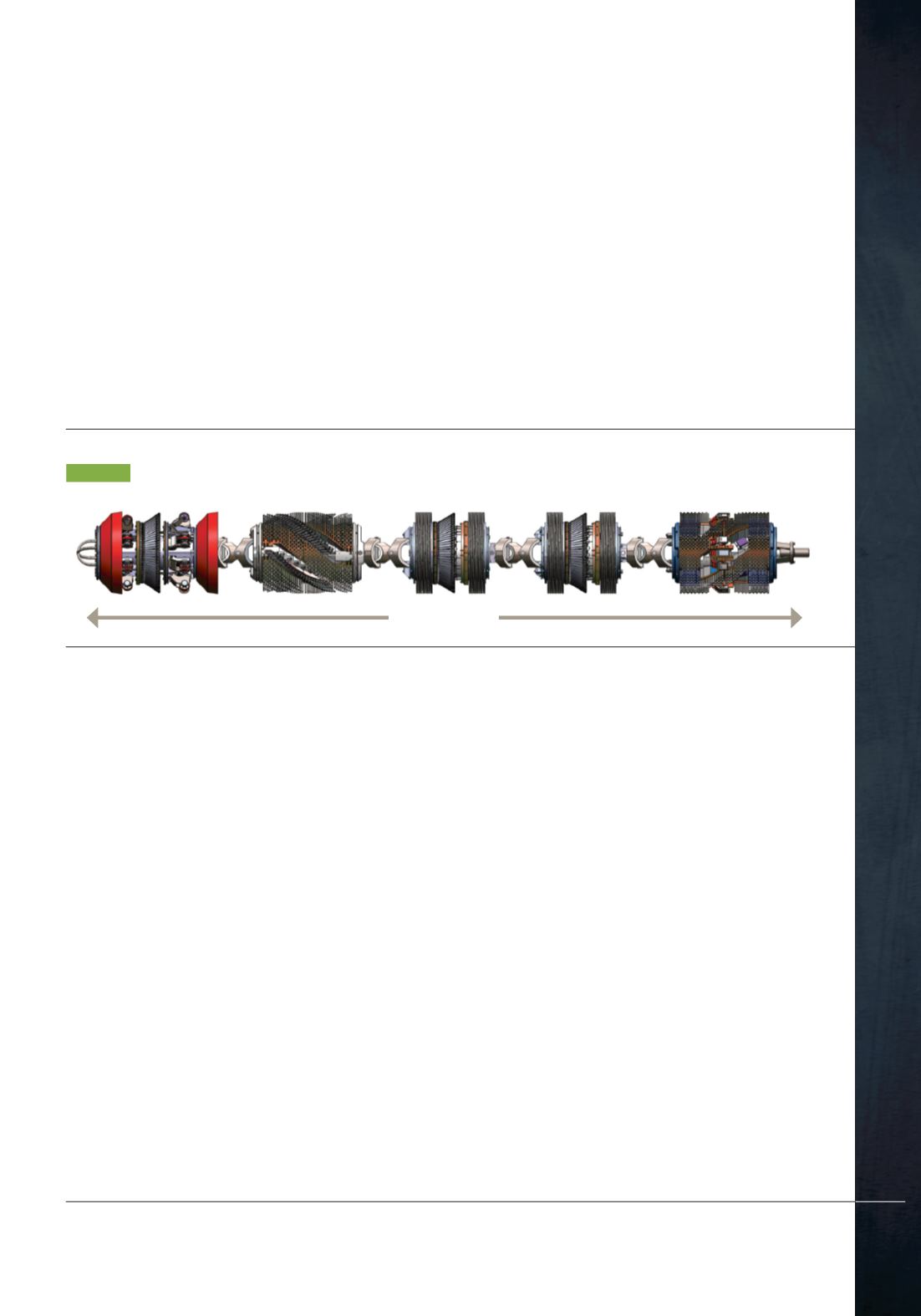
we’ll get to that later.
)
Operators choose which technologies to run,
and can run them on different dates, or on the
same date back-to-back. In some of the latest
iterations, operators can run multiple technologies
as part of an integrated platform.
This “stringed” approach to running pipeline
integrity tools provides a better solution for a
few reasons.
First, you get data that is measured at a single
point in time. As T.D. Williamson’s Manager of
New Technology Development Davin Saderholm
puts it, “With single technology tools you don’t
get a complete data set aligned in time and space.
So, you can’t say with certainty that the anomalies
you are seeing are at the exact same spot. When
you run the tools separately, you can say, ‘in this
joint, we have a dent with a crack and a gouge,
and I think it’s in the same place,’ versus, with
technologies run together, you know it’s in the
same place.”
Secondly, when multiple technologies are
run on a single platform, you have the option
to build the system around a single data
processor or CPU, and use a single software to
analyze all of the data simultaneously. When
run separately, each on its own software
platform, analysts have to spend countless
hours combining multiple sets of information
displayed by multiple sets of programs. Having
a single software display the data makes data
analysis infinitely easier, reduces the rate of
human error, and can ultimately be more cost
effective for the operator as fewer man hours are
required to analyze the information.
Thirdly, running the multiple technologies in a
single run means less labor, less risk of injury, and
less time spent on inspections.
Finally, the platform approach to running
tools gives operators the most critical information
they need to prevent tragedies – the data
to prioritize pipeline flaws. When tools are
run separately, you may get a single piece of
information that, in and of itself, doesn’t really
sound any alarms. Let’s say a tool reports a
1 percent dent. Without additional data, the
operator may consider that dent a fairly low-risk
anomaly. But if the operator can see the data from
several technologies side-by-side, he may learn
that the 1 percent dent is actually a longitudinal
gouge, and that because of pressure in the pipeline
that gouge had been re-rounded and bounced
back. All of a sudden that 1 percent dent is
looking a lot worse.
T.D. Williamson (TDW) has one of the most
comprehensive single platform inspection tools
on the market. Their trade name for this tool is
the Multiple Dataset Platform, or MDS for short.
The MDS includes DEF for deformation, Axial
MFL for volumetric metal loss, SpirALL
®
MFL for
longitudinal axis metal loss features, low field MFL
for mechanical properties of steel, and XYZ for
geospatial pipeline mapping.
The company recently added SpirALL
®
EMAT
to detect longitudinal cracks. That’s a big deal.
Cracks are what caused the Mayflower spill.
Cracks are bad.
EMAT’S BROKEN PROMISES
EMAT by itself has been a somewhat debated
I N N O V AT I O N S • J A N U A R Y -
M A R C H 2 0 1 4
C O V E R S T O R Y
17
Figure 2.
24-inch DEF+SMFL+MFL+LFM+EMAT.
17.3 ft. / 5.25 m.


